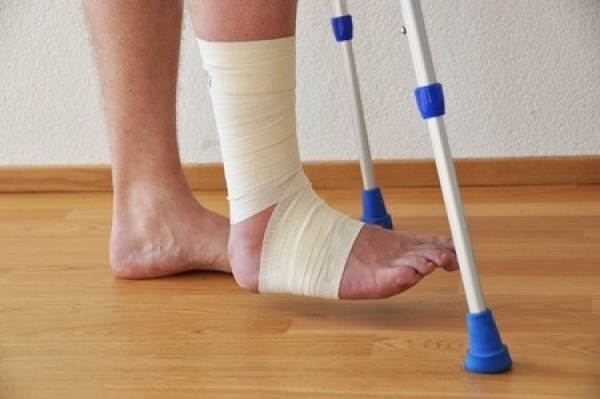When you twist your ankle bones with a significant amount of force the ligaments around the outside of the bone may get over stretched or even tear. This is the definition of an ankle sprain. Symptoms of a sprained ankle include swelling, bruising, pain and tenderness in the ankle. At Superior Foot & Ankle Care Center we know that these injuries can be painful and debilitating. That’s why we want to offer the suggestions below for preventing ankle sprains from happening:
- Seek treatment promptly if you believe you may have sprained your ankle. Being able to walk on your foot is not a sign that the ankle is okay. In fact sometimes the pain may decrease after the initial injury but a sprain that is not diagnosed and treated promptly may not heal properly.
- Finish all treatment prescribed by the podiatrist for an ankle sprain. Did you know that one of the chief causes of ankle sprains are previous ankle sprains that were not fully rehabilitated? Don’t make the mistake of discontinuing physical therapy just because you are no longer in pain. In addition to the overstretched ligaments being healed it is necessary for the muscles that support the ligaments to be retrained and strengthened. If this does not occur, repeated sprains are likely and can result in chronic weak ankles.
- Scope out your path. Sometimes an acorn or small stone can be enough to cause your ankle to turn. Uneven pavement and curbs are also prime ankle twisting culprits. Pay attention!
- Don’t overfill your arms. If you are carrying so many bags and packages that you can’t see the pavement in front of you a slip or ankle turn is more likely.
- Toss shoes that are worn out. Stretched out backs and loose stitching increase the risk of slips and your ankle giving out on you.
If, despite all precautions, you do twist your ankle, contact our Long Beach office as soon after the injury as possible by calling: 562-420-9800. Our podiatrists, Dr. Victoria Foley and Dr. Constance Omelas will examine your ankle and possibly order x-rays to diagnose the condition. The correct treatment can then be determined to get you back to full health.
